Preparing Garden Soils for Spring Planting
Once you’ve tried digging the first planting hole in a mountain garden you learn that our native soils are HARD !!! Skimp on spring soil preparation to “soften” the ground and your garden’s production can drop to almost zero. We know that the better the soil, the larger the harvest, the brighter the flowers, the easier the gardening. That’s why successful gardening has always come down to soil quality.
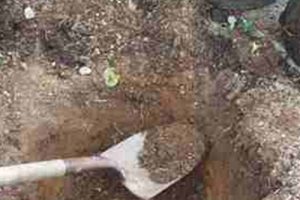
- Condensed Version of this Article:
- Blend a 2-3” inch layer of Barnyard Manure and Watters Premium Mulch to one shovel’s depth and allow it to settle in your garden for at least 2 weeks before planting.
- Before turning garden soil add a generous dose of Gypsum, 7-4-4 All Purpose Food, and Soil Sulfur to the above garden amendments.
- Prepare vegetable and garden soils in January for a March 1 planting.
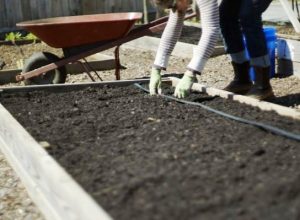
January is my month to amend garden beds, turn the soil, and let the garden rest before my March 1st planting. Here are a few secrets to mountain soil prep that return bushels of produce and a season full of flowers. Any successful backyard garden, whether in the ground or in raised beds, requires these easy steps.
The more organic material any soil contains, the better the quality of that soil. Our mountain soils are hard because they lack organics such as compost, manure, and leaf molds. Because plants use up organic resources throughout the year, new organics must be added regularly to keep the vitality of the soil alive.
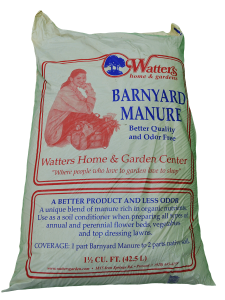
For smaller garden plots I used deodorized ‘Barnyard Manure’ that comes bagged and ready to add to the garden. This aged poop has a mixture of manure types, it doesn’t smell, and it isn’t slimy. This year my gardens again received a generous dose of 50% Watters Barnyard Manure and 50% of Watters Premium Mulch.
The mulch and manure additives ensure proper drainage, root growth, and water retention for successful garden growth. But certain mountain plants require calcium, magnesium, phosphorus, and other minor elements, all of which should be added to a garden’s soil.
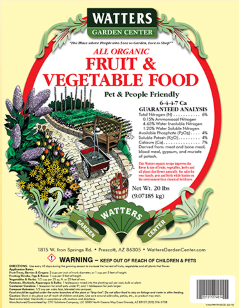
Before turning the compost additives into the planting bed, add two sources of nutrition. The first is a layer of gypsum, also known as calcium sulfate, the most effective source of calcium for plants. The second is an organic plant food I created called ‘Fruit & Veggie Food’ 6-4-4–7Ca. In flower beds, it works to produce blossoms of amazing color and fragrance!
Soil pH creeps up during the growing season. This is a problem that results from poor water and one that must be corrected to keep plants in the ideal 6.5 – 7.5 pH range. When your garden pH rises above 8.0 production stops, fruit drops, the plants yellow, wilt, and finally drop their leaves. Granular Soil Sulfur turned into your garden soil to one shovel’s depth is the correction to bad garden pH, and every mountain garden needs it.
In summary, here is the formula of soil amendments and additives to use in your mountain garden this spring: Begin with a 2-inch layer of 50% ‘Premium Mulch’ and 50% ‘Watters Barnyard Manure’. On top of this organic layer sprinkle the recommended rates of gypsum, Fruit & Veggie Food, and Soil Sulfur. Turn these to one shovel’s depth into your garden soil, and you will have an amazing garden this year!
Freshly turned soil is light and airy, so tread carefully on your amended garden soil so it retains this texture. Walk on predefined paths or use a wood plank to walk over the soil without compacting it unnecessarily.
Exact additive amounts were not given in this column because those depend on the size of your garden plot. So, talk to a garden ambassador here at Watters for exact quantities of each additive to purchase, remembering to bring along your garden measurements.
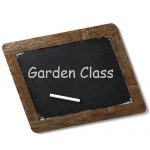
Free Gardening Class held every Saturday at 9:30 am here at Watters Garden Center.
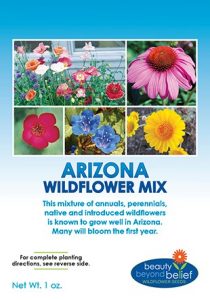
January 25 ~ Why January is the Month to Plant Wildflowers. Ready, set, grow! Late winter is the ideal window to start wildflower seed outdoors, but you can’t just chuck them at the landscape and expect success. We share all the local tips that ensure these bloomers blossom beautifully. You’ll know the best seeds, soils, food, and techniques that guarantee color this spring.
February 1 ~ Winter Soil Preparation for Growing Success. What we do to prepare our garden in winter, means a healthier garden in Spring! When properly prepared and cared for, soil can be improved each year and continue to grow plants forever. Students will learn great practices to get our mountain soil prepped for planting, such as soil amendments, nutrients, fertilizer, and more, and which is best to use in each soil type.
<> The Entire Spring Class Schedule
Until the next issue, I’ll be here at Watters Garden Center helping gardeners plant native wildflowers.
Ken Lain can be found throughout the week at Watters Garden Center, 1815 W. Iron Springs Rd in Prescott, or contacted through his web site at WattersGardenCenter.com or FB.com/WattersGardenCenter .


I discovered the gardener and landscaper’s tool of choice here is a JACKHAMMER! And I’m not kidding! ;^))
🙂
It is unclear how these directions should be applied to existing flower/shrub soil. I suppose you could dig one shovel deep “near” the roots of existing plants and mix in these amendments or would it be best just to use them as a top dressing? If used as a top dressing isn’t adding 2″ every year going to eventually cover up the lower stems, especially of shorter flowers?
You are correct this deals primarily with new planting or readying a raised bed for planting in the spring. However, when I plant my spring flowers in my pots, I always remove as much of the old soil as I can without disturbing the existing shrubs or grasses in the pots and use the recommended mixture to plant my new flowers in.